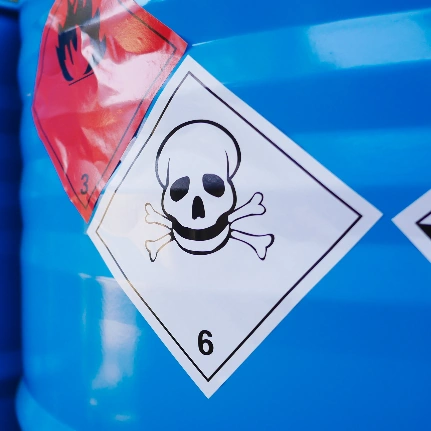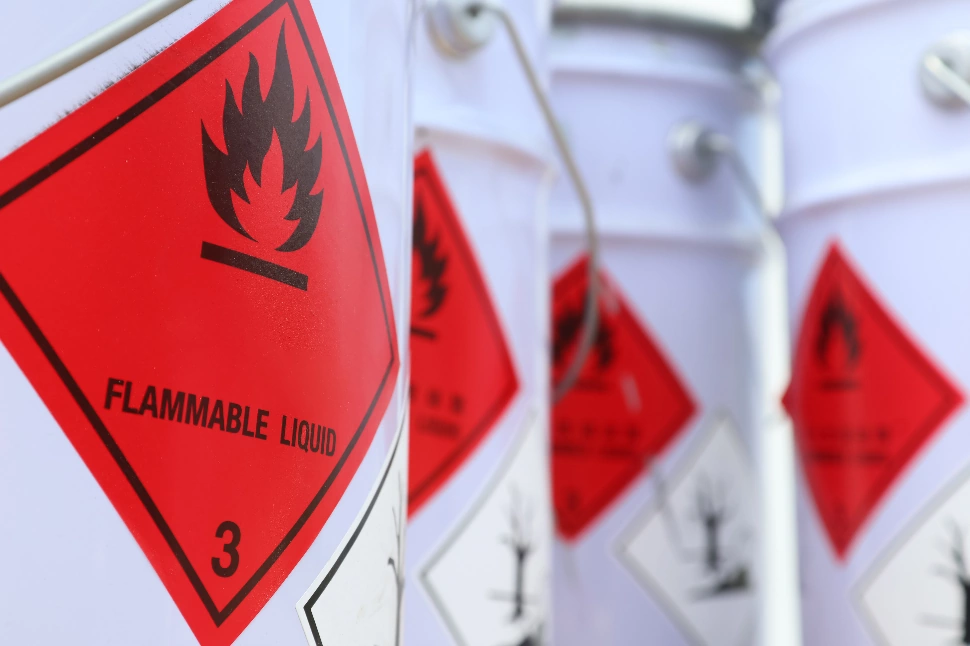
Best practices for hazardous goods transport
The transportation of hazardous goods is a complex and high-stakes operation demanding meticulous attention to detail and considered precautions.
Given the potential risks to human life, property, and the environment, it is imperative that these materials are handled, stored, and moved with the utmost care.
This blog post will delve into the critical aspects of hazardous goods transport, emphasising the importance of strict adherence to regulations and industry best practices.
The perils of hazardous goods transport
Hazardous goods pose a substantial risk. A single mishap can result in catastrophic consequences, including:
- Loss of life: Explosions, fires, and the release of toxic substances can lead to fatalities.
- Property damage: Explosions, fires, and chemical spills can cause extensive damage to buildings, infrastructure, and equipment.
- Environmental contamination: Hazardous materials released into the environment can have long-lasting and devastating effects on ecosystems.
- Financial loss: The costs associated with accidents, clean-up, and legal liabilities can be substantial.
- Reputational damage: Public perception of a business can be severely impacted by incidents involving hazardous goods.
These risks underscore the need for robust safety measures and a deep understanding of hazardous materials.
Understanding the regulatory landscape
The transportation of hazardous goods is subject to a stringent regulatory framework designed to protect public safety and the environment. Key regulations governing hazardous goods transport in the UK include:
ADR (European Agreement Concerning the International Carriage of Dangerous Goods by Road): This international document outlines detailed requirements for the transport of hazardous materials by road, encompassing packaging, labelling, documentation, vehicle specifications, driver training, and emergency response procedures.
Carriage of Dangerous Goods and Use of Transportable Pressure Equipment Regulations 2009 (CDG 2009): This UK legislation incorporates the ADR provisions into domestic law, providing additional requirements specific to the UK context.
IATA Dangerous Goods Regulations (DGR): Primarily focused on air transport, these regulations establish standards for the safe handling, packaging, and transportation of hazardous materials by air.
Compliance with these regulations is mandatory for any organisation involved in the transport of hazardous goods. Failure to adhere to these rules can result in severe penalties, including fines, imprisonment, and business closures.
The role of regulatory authorities
Multiple government agencies collaborate to oversee the transportation of hazardous goods in the UK:
- Department for Transport (DfT): As the competent authority for ADR, the DfT is responsible for implementing and enforcing the regulations.
- Health and Safety Executive (HSE): Ensures the health and safety of workers and the public through the enforcement of workplace safety regulations.
- Office for Nuclear Regulation (ONR): Oversees the safe transport of radioactive materials.
- Driver and Vehicle Standards Agency (DVSA): Responsible for vehicle safety, including the inspection of vehicles used for hazardous goods transport.
- Police forces: Enforce transportation laws and respond to incidents involving hazardous materials.
These agencies work together to conduct inspections, investigations, and enforcement actions to maintain high safety standards in the industry.
Classification and packaging of hazardous goods
Accurate classification and packaging of hazardous goods are fundamental to safe transportation. Hazardous materials are categorised into nine classes based on their physical, chemical, and biological properties. Each class has specific requirements for packaging, labelling, and transportation.
Packaging plays a crucial role in protecting the contents from damage and preventing leaks or spills. Packages must be designed and constructed to withstand the rigours of transportation, including vibration, shock, and temperature extremes. The type of packaging required depends on the properties of the hazardous material and the mode of transport.
The 9 classes of dangerous goods are as follows:
- Class 1: Explosives
- Class 2: Gases
- Class 3: Flammable liquids
- Class 4: Flammable solids
- Class 5: Oxidising substances
- Class 6: Toxic substances
- Class 7: Radioactive materials
- Class 8: Corrosive substances
- Class 9: Miscellaneous dangerous goods

Penalties for non-compliance
Non-compliance with hazardous goods regulations can have severe consequences for individuals and organisations. Penalties can include:
- Financial penalties: Substantial fines can be imposed for violations of the regulations.
- Imprisonment: In cases of serious negligence or willful misconduct, individuals may face imprisonment.
- Loss of licence: Transportation licences can be revoked for repeated or serious violations.
To avoid these consequences, it is essential to prioritise compliance and invest in robust safety management systems.
Best practices for hazardous goods transport
Adhering to industry best practices is crucial for minimising risks and ensuring the safe transportation of hazardous goods. Key best practices include:
- Thorough employee training: All personnel involved in the handling, packaging, and transportation of hazardous goods should undergo comprehensive training on relevant regulations, safety procedures, and emergency response.
- Detailed documentation: Accurate and complete documentation is essential for tracking the movement of hazardous goods and facilitating emergency response.
- Emergency response planning: Develop and implement comprehensive emergency response plans to address potential incidents.
- Regular inspections and maintenance: Conduct regular inspections of vehicles, equipment, and packaging to identify and rectify potential hazards.
- Continuous improvement: Implement a system for identifying and addressing safety concerns to enhance overall performance.
By following these best practices, organisations can significantly reduce the risk of accidents and incidents involving hazardous goods.
Why choose us?
At OSE European, we have a wealth of experience in safely transporting hazardous goods across the UK and Europe. Our fleet of fully equipped vehicles, coupled with our ADR-trained drivers, guarantees the lawful and secure carriage of your shipments.
We offer a comprehensive range of services tailored to meet your specific needs, including the transportation of goods across classes 2 to 9 and the handling of hazardous waste in the UK.
Our commitment to excellence extends beyond standard transportation, as we provide specialist options such as temperature-controlled vehicles, tamper-proof seals, and customised routing for restricted goods.
With a proven track record and a strong reputation in the industry, OSE European is your trusted partner for hassle-free hazardous goods transportation. We offer expert guidance and support throughout the entire process, ensuring your goods reach their destination safely, securely, and on time.
Contact us today to discuss your hazardous goods transportation requirements. Our team of experts is ready to provide a tailored solution to meet your specific needs.
